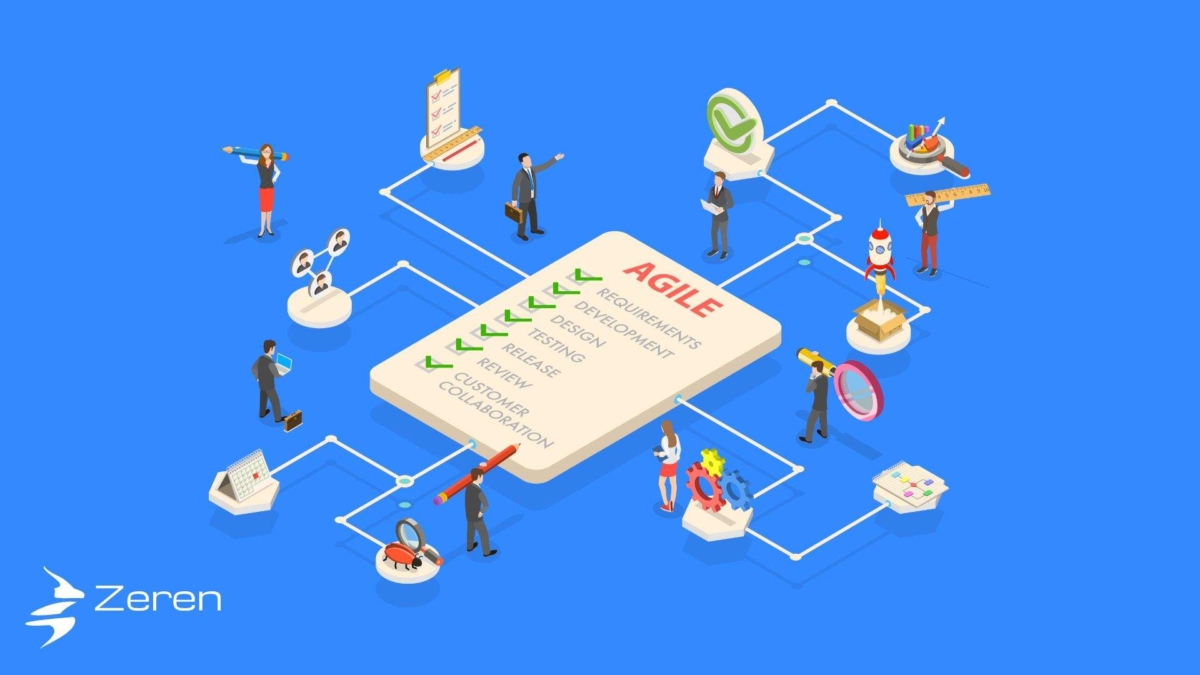AGILE ACROSS INDUSTRIES: CUSTOMIZING SUCCESS IN YOUR FIELD
Posted: April 21, 2024 |
In:
Agile Development
Agile methodologies have reshaped numerous industries by accelerating development cycles, enhancing flexibility, and integrating customer feedback into real-time updates. From technology to healthcare, and finance to construction, this transformative approach facilitates dynamic project management and adaptive planning, ensuring products and services not only meet current market demands but also adapt swiftly to changing conditions. In this article, we explore how Agile principles are applied across different sectors to drive innovation, improve efficiency, and maintain competitive advantages in rapidly evolving markets. Discover the wide-reaching impact of Agile methodologies and learn how they can revolutionize your industry practices.
Technology and Software Development: Agile methodologies enable technology companies to release software solutions more quickly, gaining a competitive edge in the market. The iterative development process allows for incremental feature releases, ensuring that software is delivered to customers in shorter timeframes.
Manufacturing: Agile in manufacturing streamlines processes, integrating customer feedback into product development for smarter, market-responsive production. Agile methodologies enable manufacturers to rapidly develop software solutions that streamline production, automate processes, and enhance supply chain management.
Healthcare: Within healthcare, it enables organizations to rapidly develop and adapt digital health solutions, it allows for iterative enhancements, incorporating user feedback and ensuring compliance with regulatory requirements. Agile development promotes efficient healthcare software development, facilitating better patient care, improved data management, and enhanced interoperability.
Finance and Banking: In finance, Agile paves the way for efficient project management and compliance adaptation, ensuring quick responses to financial trends and regulatory changes. It focuses on enhancing customer experience, optimizing financial operations, and increasing security and data privacy.
Construction: In construction, Agile optimizes project management, adapting swiftly to design changes, regulatory updates, and client requirements. It streamlines workflows and improves resource use, ensuring projects stay on schedule and within budget, all while maintaining quality and safety standards.
Education: In education, Agile enhances project management by adapting quickly to curriculum changes, educational trends, and stakeholder feedback. It promotes collaborative learning initiatives, efficient resource use, and aligns educational projects with evolving academic goals, ensuring responsive and effective educational processes.
Retail: It allows retailers to quickly adapt to the growing e-commerce landscape. It enables the development of customer-facing applications, inventory management systems, and personalized shopping experiences. Agile development ensures that retailers can meet changing customer expectations and remain competitive in the digital marketplace.
Hospitality and Tourism: In hospitality and tourism, Agile streamlines project management by swiftly adapting to changing guest preferences, market trends, and operational needs. It enhances guest experiences, optimizes service delivery, and ensures timely response to industry-specific challenges, fostering a dynamic and customer-centric approach.
Marketing and Advertising: In marketing and advertising, Agile accelerates project execution by quickly adapting to consumer behavior, market shifts, and campaign feedback. It fosters creativity and real-time strategy adjustments, ensuring campaigns are relevant, impactful, and aligned with current trends, enhancing audience engagement and brand presence.
Government and Public Sector: In the government and public sector, Agile facilitates responsive project management, swiftly adapting to policy changes, community needs, and regulatory requirements. It enhances public service delivery, streamlines government initiatives, and ensures projects are aligned with the evolving needs of citizens, promoting efficiency and transparency in public administration.
Non-Profit Organizations: In non-profit organizations, Agile aids in effectively managing projects by quickly adjusting to changing donor expectations, community needs, and funding landscapes. It streamlines program execution, enhances volunteer coordination, and ensures initiatives are closely aligned with the organization’s mission, maximizing impact and resource utilization.
Creative Industries (like Film and Media): In creative industries like film and media, Agile fosters a flexible project management approach, adapting swiftly to artistic changes, audience feedback, and production dynamics. It encourages collaborative creativity, optimizes production schedules, and ensures projects align with evolving artistic visions and market demands, enhancing overall creative output and audience engagement.
Eager to Elevate Your Agile Knowledge?
Browse our Insights section now and discover the transformative power of Agile Development. Stay ahead of the curve!

GLOBAL AGILITY – CHOOSE THE ADVANTAGES OF NEARSHORE AND OFFSHORE AGILE DEVELOPMENT
Nearshore and offshore Agile development models stand out as strategic approaches that leverage global talent and resources. These models involve collaborating with development teams located in nearby or distant countries, respectively. Here are some key advantages of these global Agile development strategies:
Nearshore Agile Development:
- Cultural and time zone alignment: often shares similar time zones and cultural affinities with the client, facilitating smoother communication and collaboration.
- Cost-effective expertise: access to skilled developers at a lower cost than local markets, without significant compromise on quality or efficiency.
- Agile compatibility: the proximity allows for more effective implementation of Agile practices like daily stand-ups and sprint reviews, ensuring a more synchronized workflow.
Offshore Agile Development:
- Access to a global talent pool: offshore development opens doors to a vast array of international tech talent, bringing diverse skills and perspectives to the project.
- Cost savings: significant cost reductions compared to local hiring, allowing for budget allocation to other critical areas of the project or business.
- Round-the-Clock productivity: with teams in different time zones, work can progress almost 24/7, accelerating development cycles and time-to-market.
As industries continue to evolve at an unprecedented pace, Agile methodologies stand out as a crucial tool for ensuring adaptability and driving success. Whether you’re looking to enhance project management, speed up product development, or ensure that your services meet the ever-changing demands of your industry, Agile offers a pathway to more resilient and responsive business practices.
Are you ready to harness the full potential of Agile methodologies within your industry? Zeren, as your experienced partner, can guide and support your transformation efforts. Explore how we tailor Agile solutions to fit specific industry needs, ensuring your operations are as efficient and responsive as possible. Join forces with Zeren to unlock the transformative power of Agile and propel your business ahead in a competitive global market.
Partner with Zeren





















